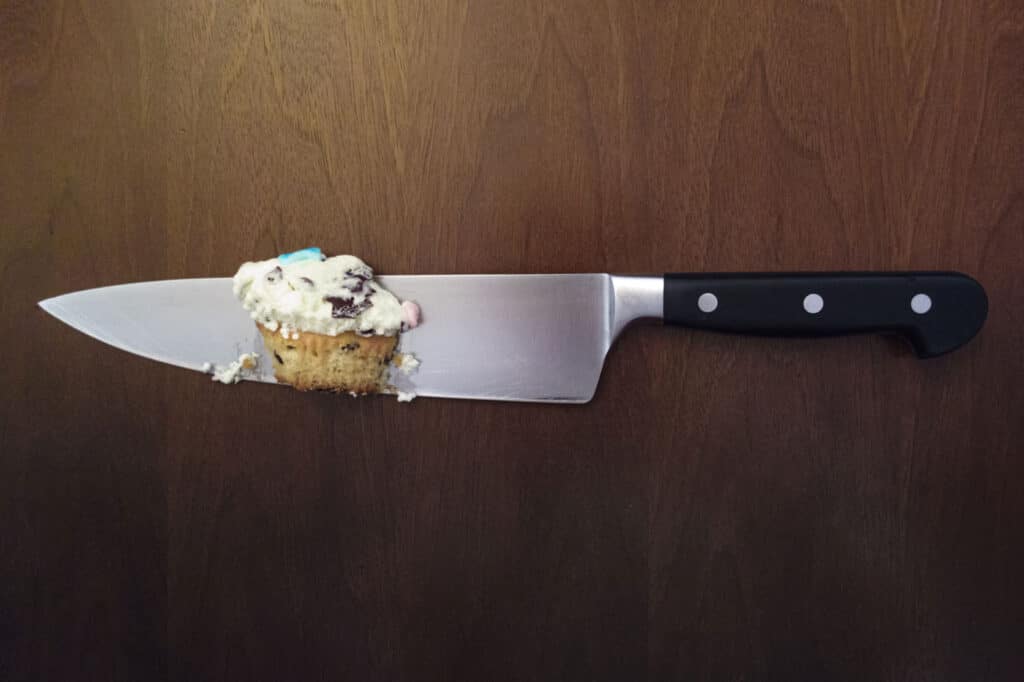Yes, we’re talking about the Fox TV show starring the more-bleeps-than-not celebrity chef, Gordon Ramsay. I’ll admit, I really like the show. I’m not sure if that’s a good thing or not, but I’m kind of hooked.
Granted, they annoyingly pack exposition and dramatic transitions like a burrito with too much rice. But there’s still some really good meat in there.
I think there are a lot of lessons that can be learned from Ramsay and restaurateurs, good and bad. As I’m thinking about it, there’s a lot more than these three points but it’s a start.
Start With the Right Problem
Okay, if you’ve seen the show, what is usually the first thing that Gordon does when helping a restaurant? Eat. Or at least try to anyways. A majority of the time he takes one bite of each thing, spits it out or uncomfortably swallows. The food is bad and he doesn’t beat around the bush. He goes right to the heart of the problem.
When asking the restaurant owners what the problem is, they go the deflection route.
“The problem is that the customers just aren’t coming.” They’ll say.
Despite Ramsay’s reiteration of the question, they come back with the same answer. Often the possibility of it being their fault hasn’t even occurred to them. So he has to very specifically target them and their insecurities, inadequacies, and ineptness until they finally come to terms with the real problem at hand—whether you agree with his strategy or not, it becomes clear that something has to break. It can either be the owner’s pride, or the restaurant itself.
In design, the objectives are key. We are setting out to accomplish a very specific goal with our work be it raise awareness, increase sales, or communicate a message. Solving the wrong problem will most likely render the work ineffective and unsuccessful.
If we take the face-value issues as is, we may never reach a real solution. Sometimes it takes an angry British man digging through the filth of our walk-in freezer to understand where the real problems lie… Molding and contaminated.
Get Out of the Tunnel
As unpalatable as Ramsay’s rage can be, it’s probably the only thing that can get most restaurant owners out of their own heads. Maybe they’ve owned this place for eight years, losing two grand each of the last twelve months. That sort of pressure enables the brick laying of excuses to continue until they have no view of the world around them.
Never stop taking steps away from your work and reflecting. To get to the right problem we must continually question, even if we won’t like the answer. Is this how I dreamed it in my head? Could I do something differently that will make the whole better? Is what I am putting out actually good?
The reason many owners in Kitchen Nightmares get so hot-headed in response to accusations is that they have either not asked themselves these questions or they have chosen ignorance out of a fear for the answer. Finally, when being exposed and made vulnerable, like a cat being cornered, they lash out.
The first step of getting out of the tunnel is realizing that you’re in it. Seek the eyes and ears of others to get a fresh perspective. And as Gordon would agree, take criticism.
Care for Your Customers
Another aspect we can learn from restaurantism (new word–what do you think?) is that the customers really matter.
In his poetically academic book called The Shape of Design, Frank Chimero says, “An affection for the audience produces the care necessary to make the work well.”
When it comes to food, that seems blatantly obvious. I have a restaurant, I make money when people eat here, I should make food that they would pay for. Put it like that and you wonder why anyone would fall out of that thought process, but over time, that tunnel can affect everything down to your very own taste buds.
Yet still the most stubborn among restaurant owners get it in their heads that the customer is wrong or stupid. Building on all points above it, that comes from continuously defending themselves until the outside world looks wrong or even malicious.
When talking design, the users are our customers. Even though our clients are the ones paying us, the messaging, strategy, and goals are all about how their customers receive it. With that in mind, we have to care for them and most importantly understand them. That helps us to be experience-minded—crafting the look, feel, and product to something that they respond well to.
To wrap it all up, I will leave you with the epitome of all Kitchen Nightmares episodes. If you watch the show, you already know who I’m talking about.Amy’s Baking Company.

